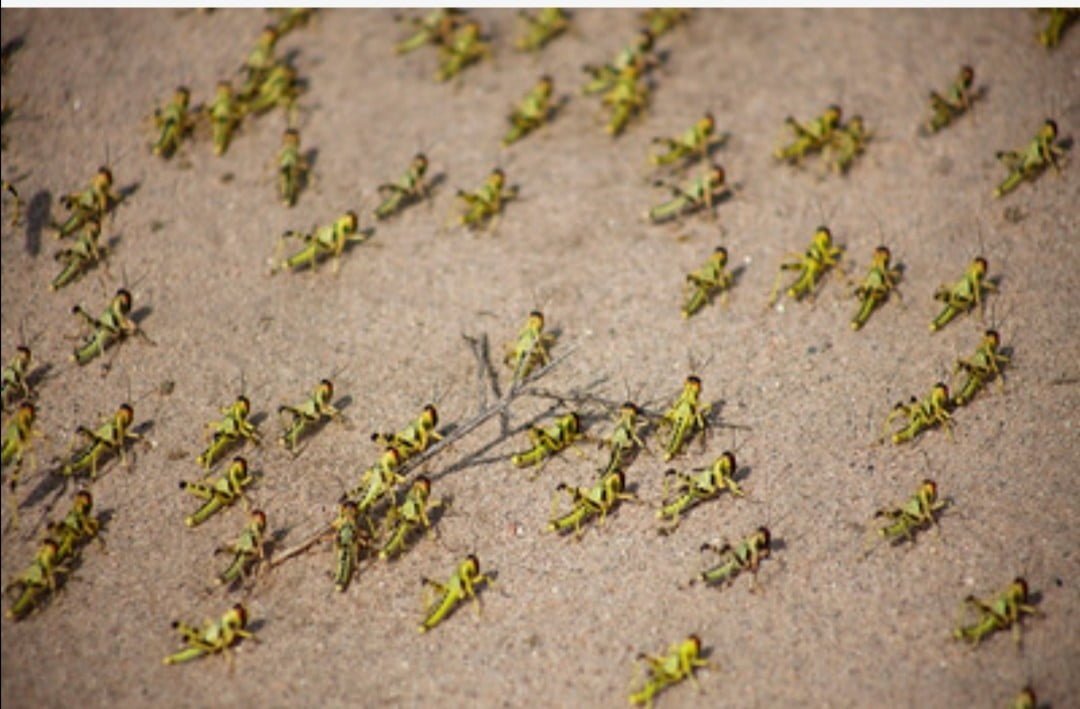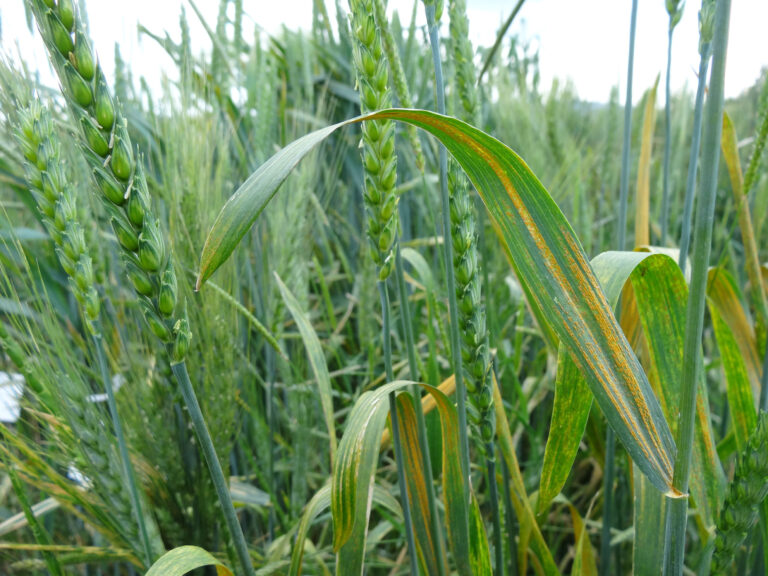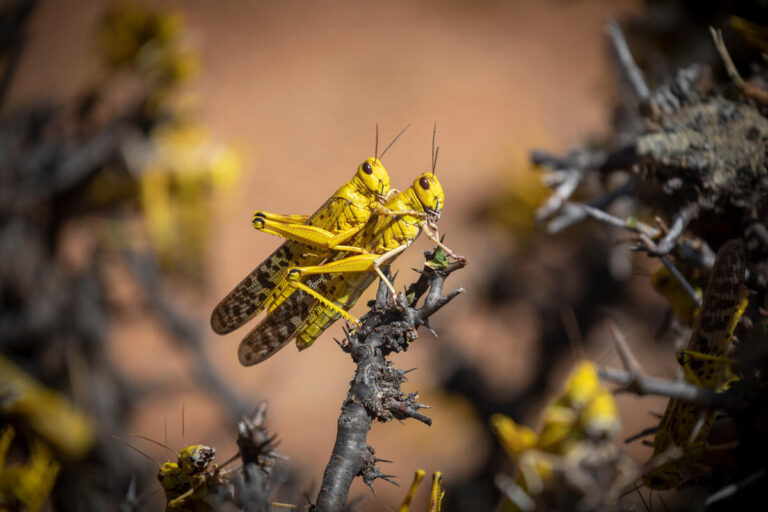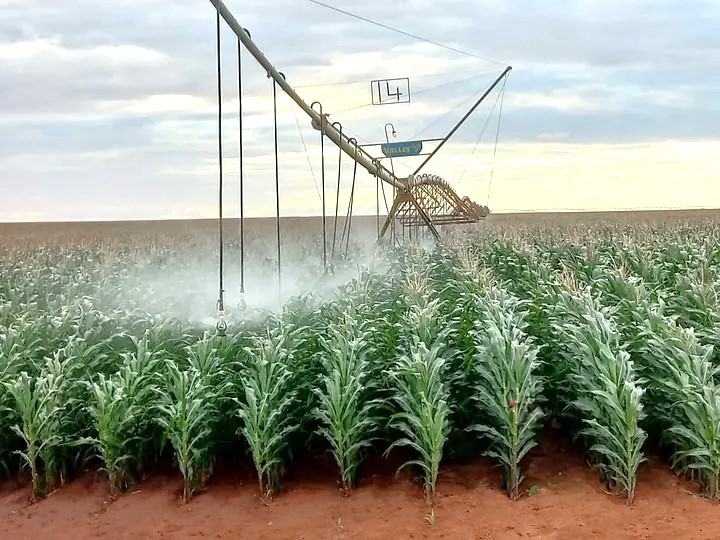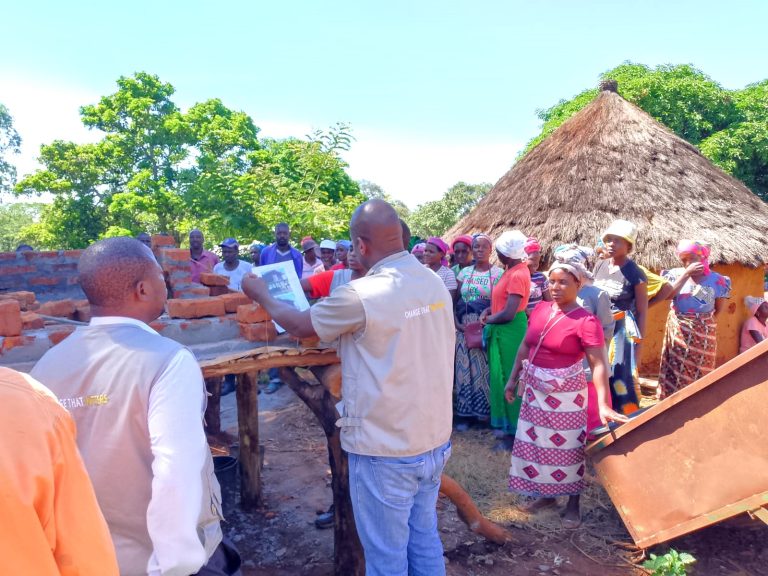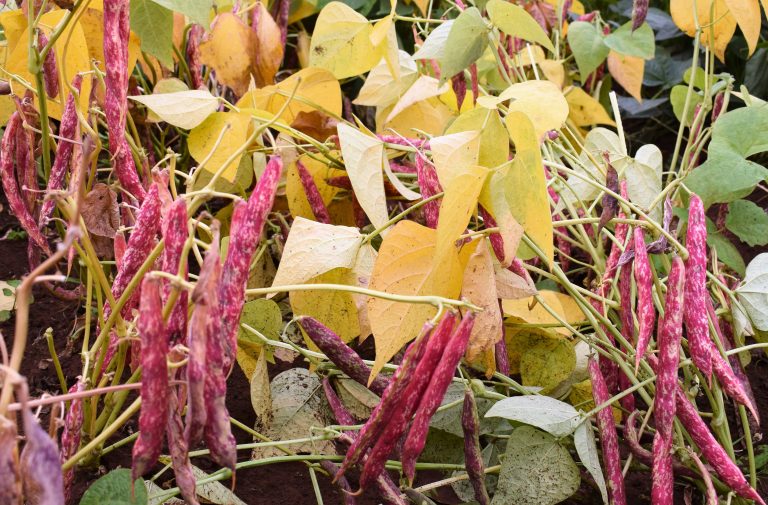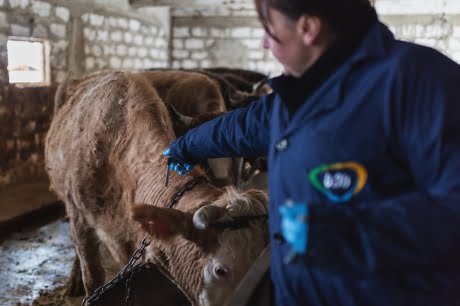Locusts have continued wreaking havoc in the country as it also battles the Covid-19 pandemic. In Mbui village in Kirinyaga County, locusts have invaded rice farms and farmers are in a panic mode. Farmers in the area say they are waking to find locusts in their rice fields which is complicating their farming life as they have to chase away birds too feeding on their rice.
The desert locusts are currently attacking many counties with the ones in the Northern part of the country being the most affected. Isiolo, Mandera, Marsabit, Garissa, Samburu, Tana-River, Laikipia, Meru, Baringo, Turkana, Wajir, Tharaka-Nithi, Machakos, Embu, Makueni, Kajiado, Murang’a and Kitui are all under attack from the desert locusts.
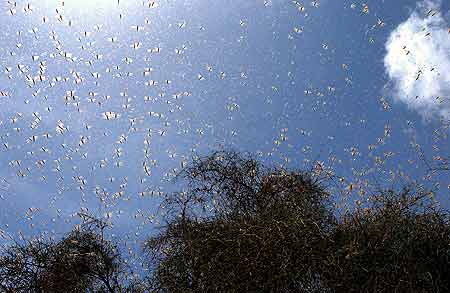
Speaking in a Local TV station, Agriculture Principal Secretary Hamadi Boga said the government had teams in the affected counties who include the National youth Service (NYS) personnel to help in tracking. The PS however says spraying cannot go on during the ongoing rains as this would be a wastage of chemicals.
The Food and Agriculture Organization of the United States (FAO) has handed over 3 planes to the Kenyan government to help in fighting the locust menace. FAO further says it is conducting a rapid assessment on the impact of desert locusts on pastoral livelihoods as part of recovery projections & preparations to ensure there is food security and zero hunger
FAO warns that the current situation in East Africa remains extremely alarming as more swarms form and mature in northern and central Kenya, southern Ethiopia and probably in Somalia. It says this represents an unprecedented threat to food security and livelihoods because it coincides with the beginning of the long rains and the planting season. The widespread rains that fell in late March FAO says will allow the new swarms to mostly stay in place, mature and lay eggs while a few swarms could move from Kenya to Uganda, South Sudan and Ethiopia. During May, the eggs will hatch into hopper bands that will form new swarms in late June and July, which coincides with the start of the harvest.


